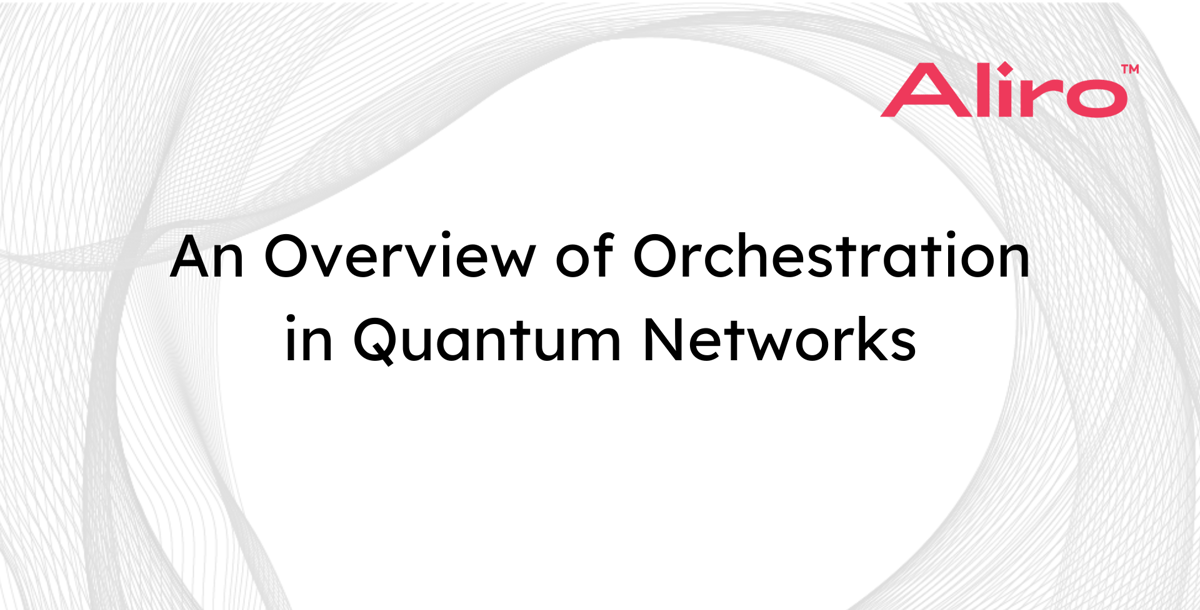
An Overview of Quantum Network Orchestration
Orchestration is a key component of efficient networks, providing a framework for managing complex, dynamic network environments. It automates the configuration, management, and coordination of computer systems, applications, and services across a network’s infrastructure. Automation is essential for handling the vast amount of resources and data flows characteristic of today’s modern networks, reducing the potential for human error and enhancing stability and reliability of the network. Orchestration facilitates scalability and adaptability in network operations by streamlining the deployment and integration of new services and technologies. This is increasingly important in today’s fast-evolving digital landscapes, where the ability to rapidly respond to new demands and security threats can significantly impact an organization’s resilience.
The Evolution of Network Management
Management of early classical networks required manual input through command lines and terminal servers, often leading to errors and inefficiencies such as screen scraping, where visual data from an onscreen display is collected as plaintext to be used in scripts for other applications. Network management has evolved significantly since those early days, transitioning from simple command-line interfaces to sophisticated management protocols like NETCONF and RESTCONF. These advancements have been instrumental in managing complex network configurations and topologies, ensuring operational consistency, and providing mechanisms for a variety of useful functions.
The advent of TCP/IP revolutionized network management by enabling remote access and control, but it also introduced the need for more sophisticated management techniques. These included programmatic APIs and automation to handle complex command sequences and data synchronization across distributed networks. Early management protocols like SNMP had limitations - they were hard to use and debug.

The pain points of SNMP led to the implementation of the Network Management Datastore Architecture (NMDA, RFC 8342) and the development of more robust and scalable solutions like RESTCONF and NETCONF, which are designed to handle network configurations more efficiently and reliably. These protocols support transactions and can interact with network configurations down to the individual node level, allowing for precise control and management of network resources.
These innovations in classical orchestration form a foundation that quantum networks can readily build upon.
Translating Classical Principles to Quantum Networks
Quantum network orchestration builds on the foundations laid by classical network management but introduces new challenges and requirements specific to entanglement-based technology. The primary challenges lie in the unique properties of quantum mechanics and how they affect data transmission and device management.
Quantum networks use qubits for data transmission, which requires precise control over qubit states and the physical environment. This necessitates innovations in network management such as the ability to handle entanglement-specific metrics like entanglement rates and the fidelity of quantum states.
So while management of quantum networks conceptually shares a lot of common ground with management of classical networks, there are some unique requirements of quantum networks that demand a nuanced approach to their orchestration. Here are a few of the most critical differences between classical and quantum network orchestration:
- Stabilization delays. Some entanglement-based devices need significant time to apply configuration changes. For example, lasers may need several minutes to reach the necessary temperature. These types of delays are not new in network orchestration, but the time required is often an order of magnitude higher. quantum network orchestration systems managing such devices need to account for a stabilization delay when provisioning services in a timely manner to avoid service disruptions.
- Precise routing of timing signals. The precise routing of timing signals in quantum networks is essential for maintaining the coherence and synchronization of qubit states across the network. In entanglement-based communications, the exact timing of qubit arrival is vital for the efficacy of the transmission. This stems from the need to measure the light transmission propagation delay accurately to ensure that the timing of the qubit transmission matches its corresponding timing signals. To achieve this accuracy, quantum networks must route timing signals along the exact routes as qubits. Sophisticated network management systems capable of continuous monitoring and real-time adjustment are required to ensure that the timing signals remain perfectly synchronized with the qubits.
- Periodic calibration of polarization. Polarization in entanglement-based devices is sensitive to environmental factors like temperature changes and vibration. To manage these sensitivities, quantum networks incorporate polarization compensators within their infrastructure. These devices are essential for adjusting the polarization of photons to counteract the polarization drift caused by environmental factors. The effectiveness of these compensators hinges on their regular and precise calibration. Without frequent adjustments, the polarization could deviate from its intended state, leading to errors in data transmission and processing. The necessity for constant monitoring and adjustment underscores the need for management systems in entanglement-based networks. Such systems should be capable of automatically detecting when polarization adjustments are necessary and executing the required calibrations without human intervention. This level of automation ensures continuous operational integrity and reduces the risk of data errors, enhancing the reliability and security of the network.
The Future: AI-Driven Quantum Network Orchestration
Looking ahead, the orchestration of classical and quantum networks will likely become more automated and intelligent. AI can provide dynamic management solutions that adjust configurations in real-time, optimize network traffic, and predict potential issues before they affect network performance. In quantum networks, AI’s role could extend to optimizing qubit configurations, managing entanglement properties, and ensuring the integrity of data transmission.
The need for standardized protocols and interoperability between different types of network devices and infrastructures becomes increasingly important as quantum networks expand. Principles of efficient and effective network management, layered architecture, and proactive monitoring are just as applicable to quantum networks as they have been to classical networks. Quantum network management tools and protocols can continue to build on the foundation of classical network management, while innovating to address the unique requirement of entanglement-based quantum networks.
